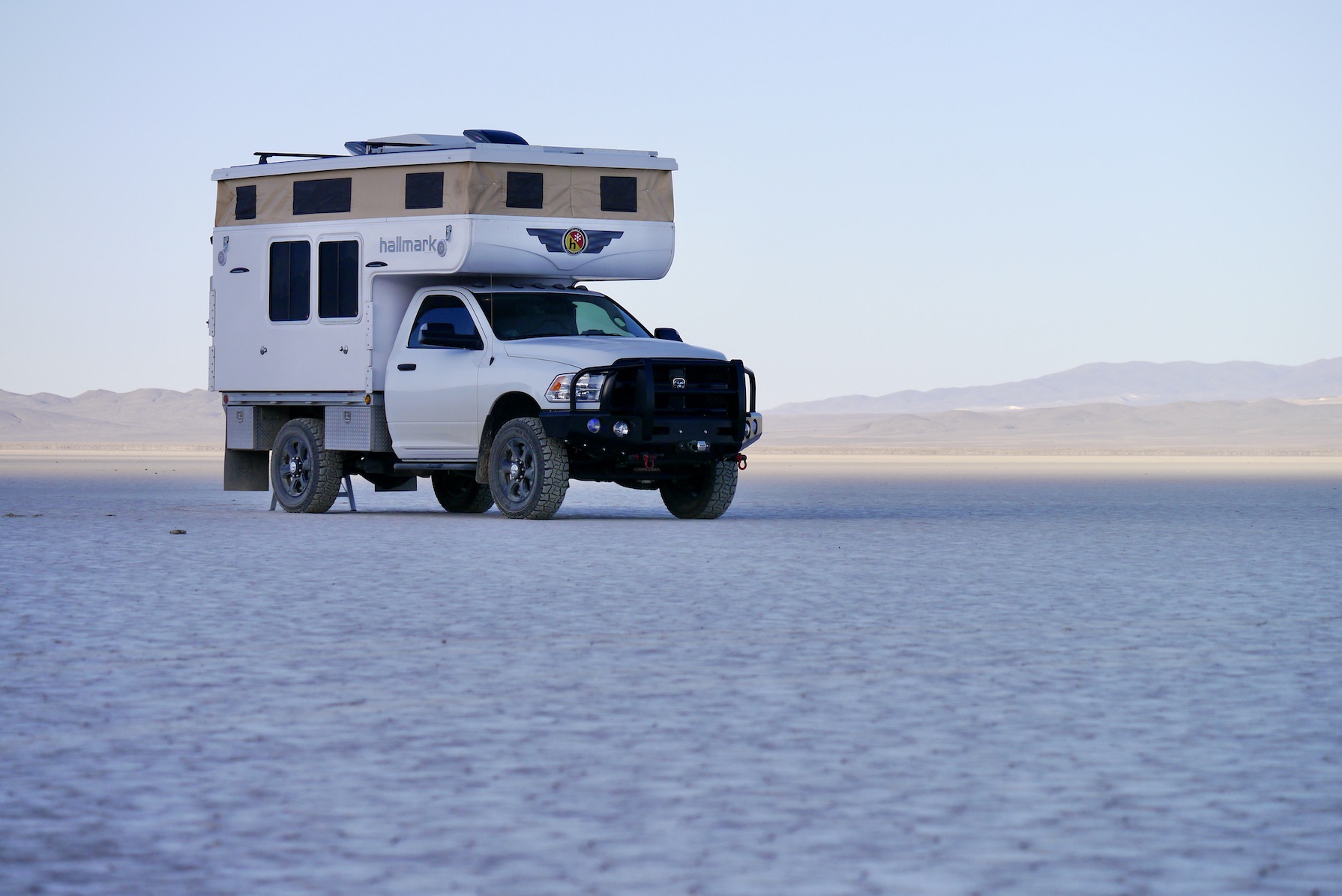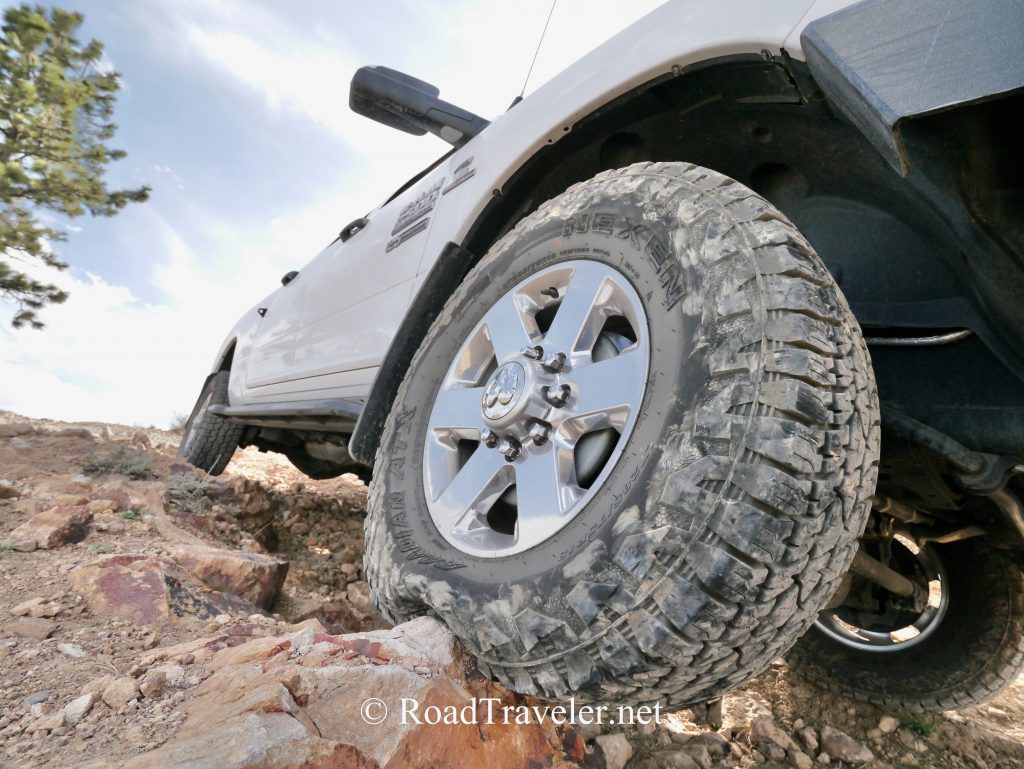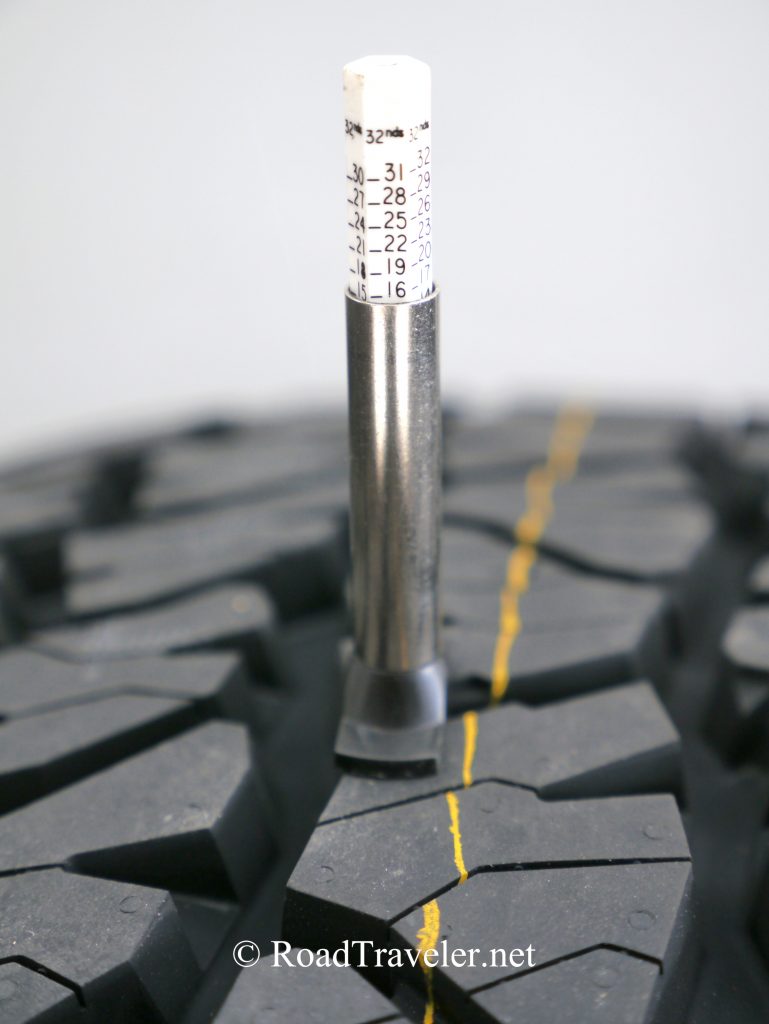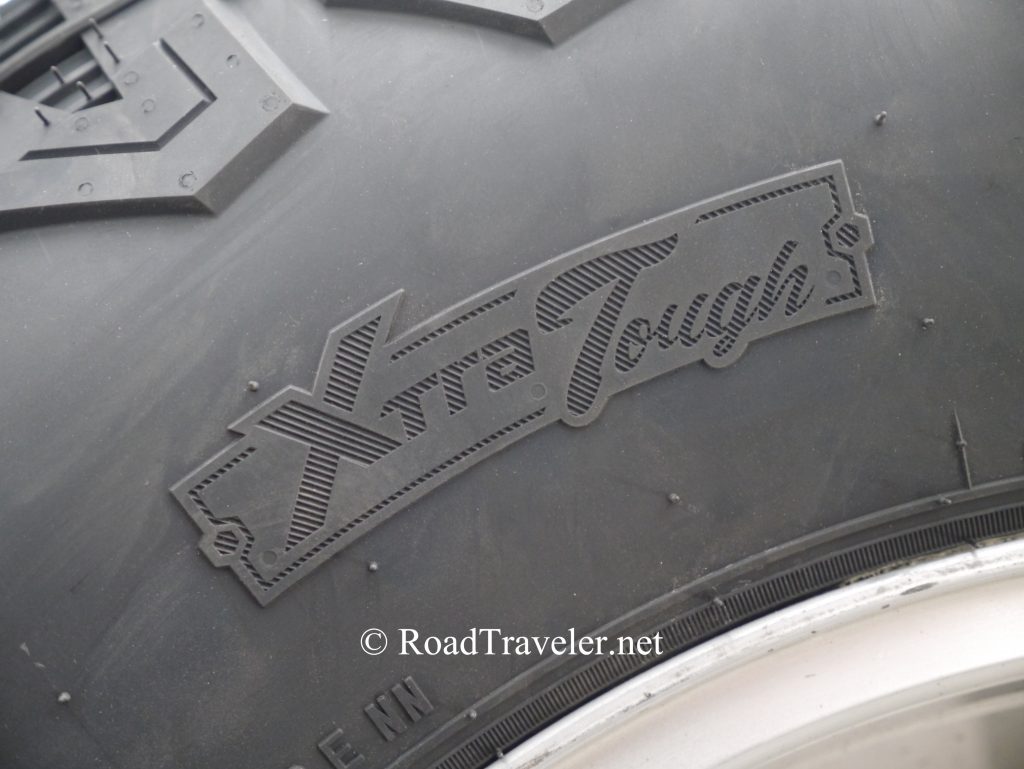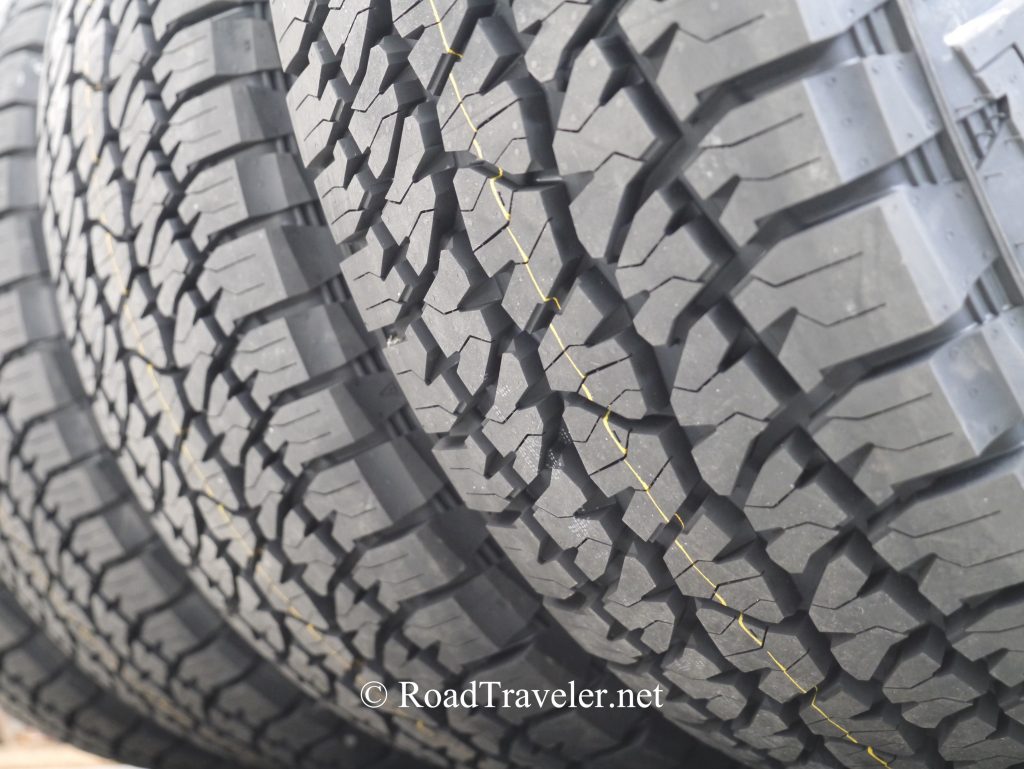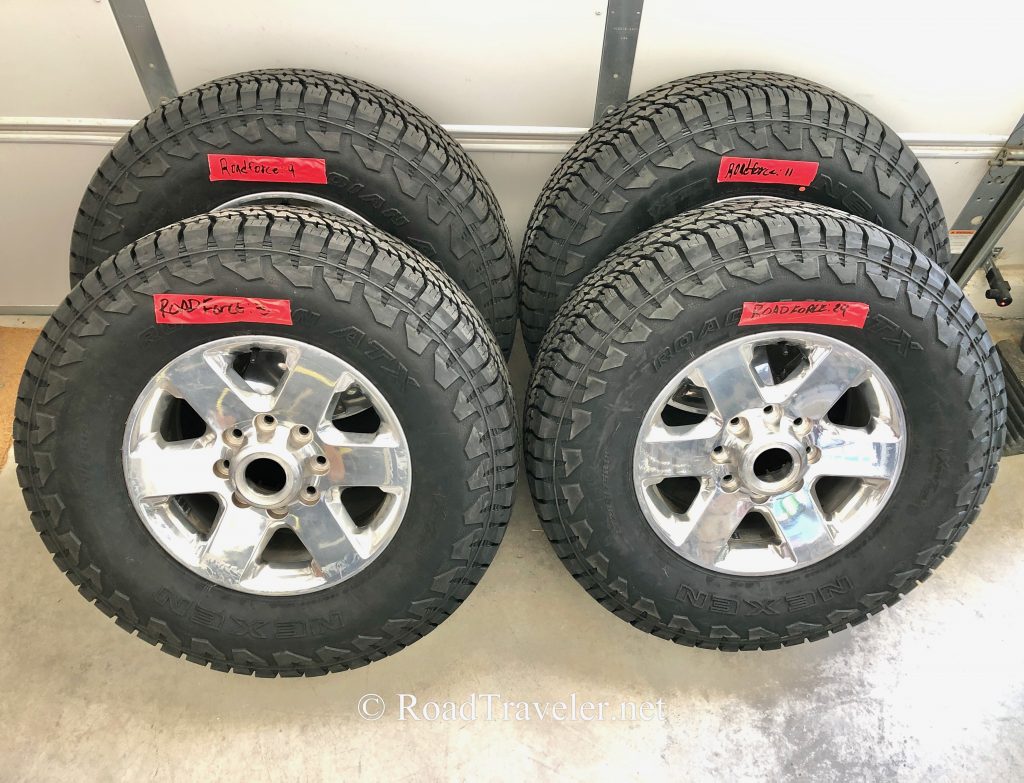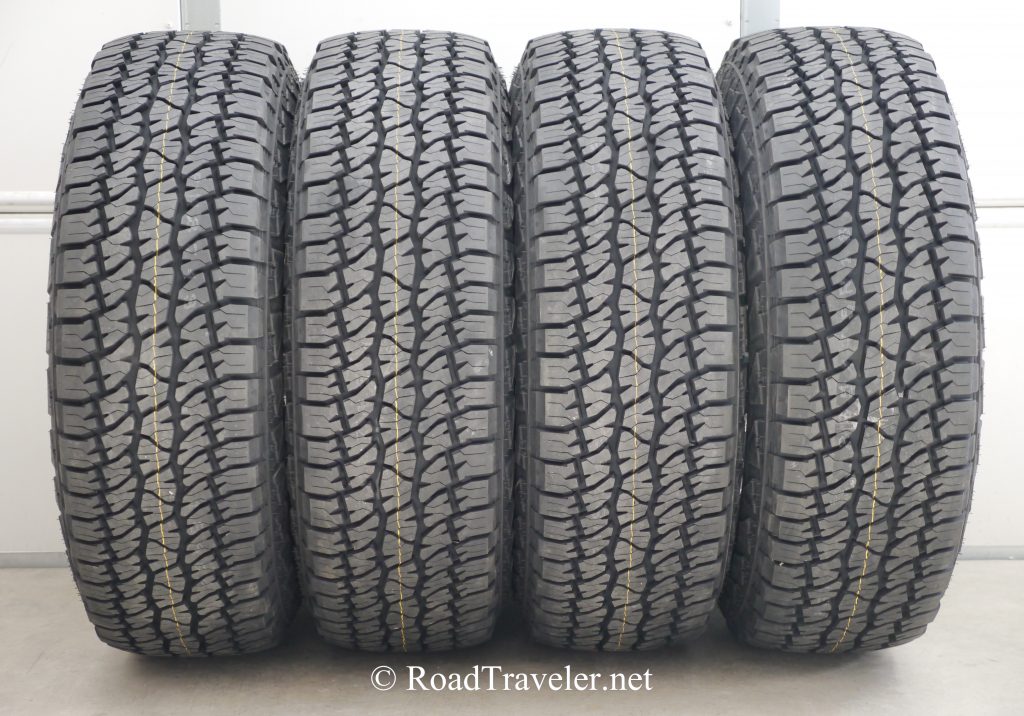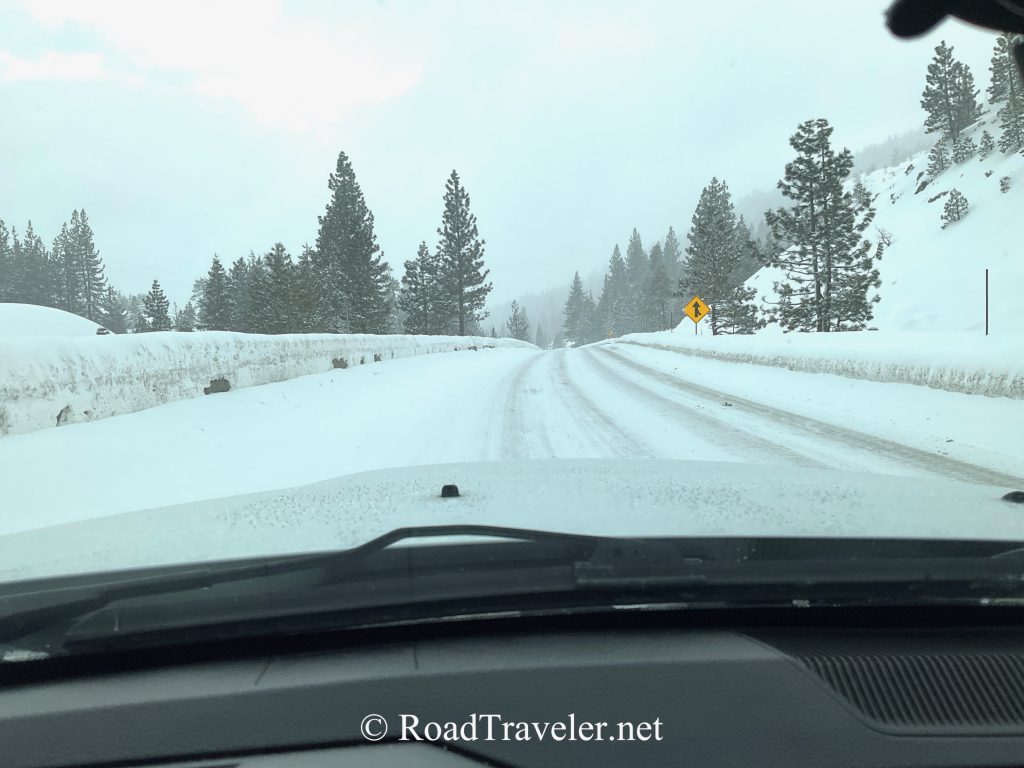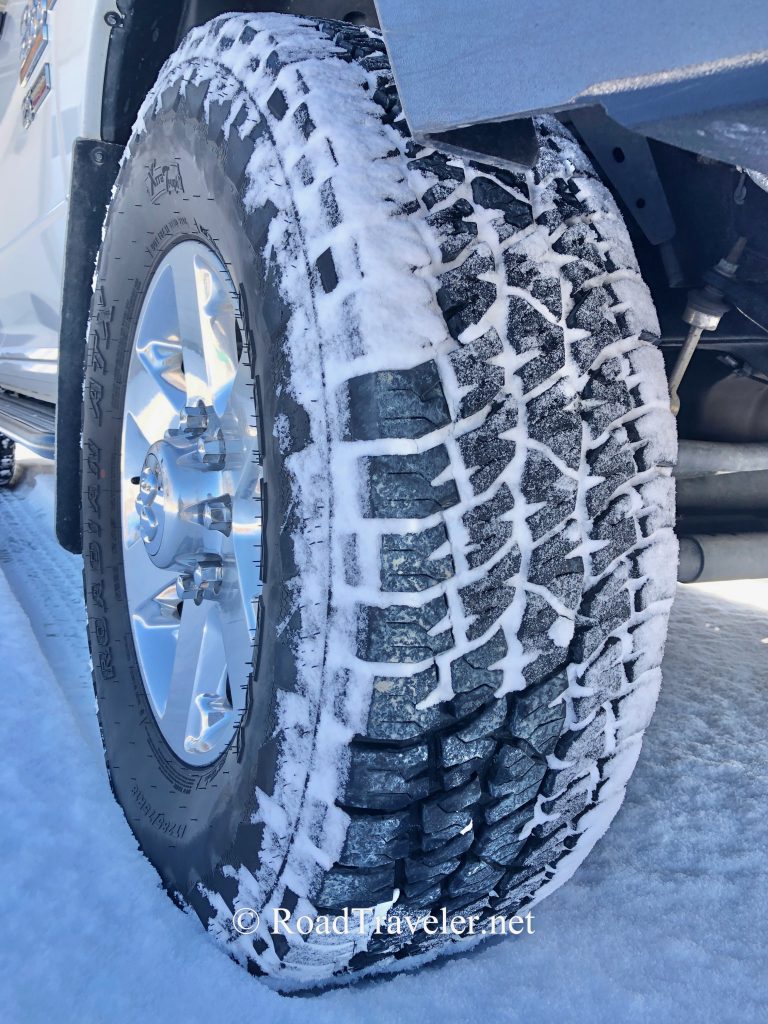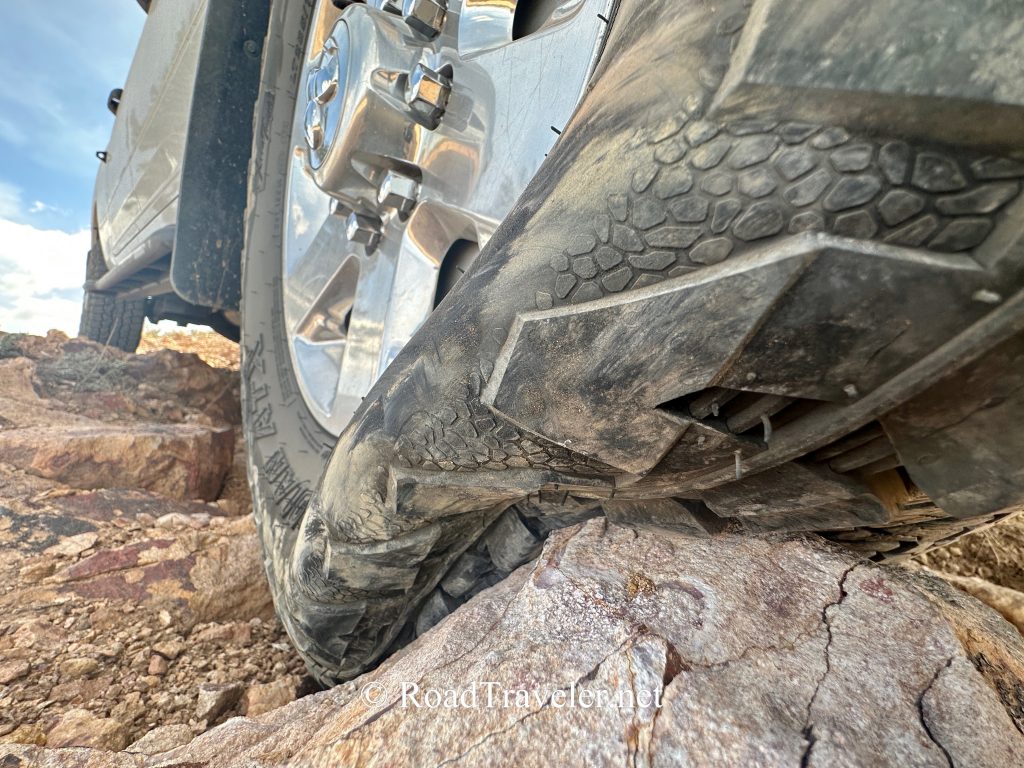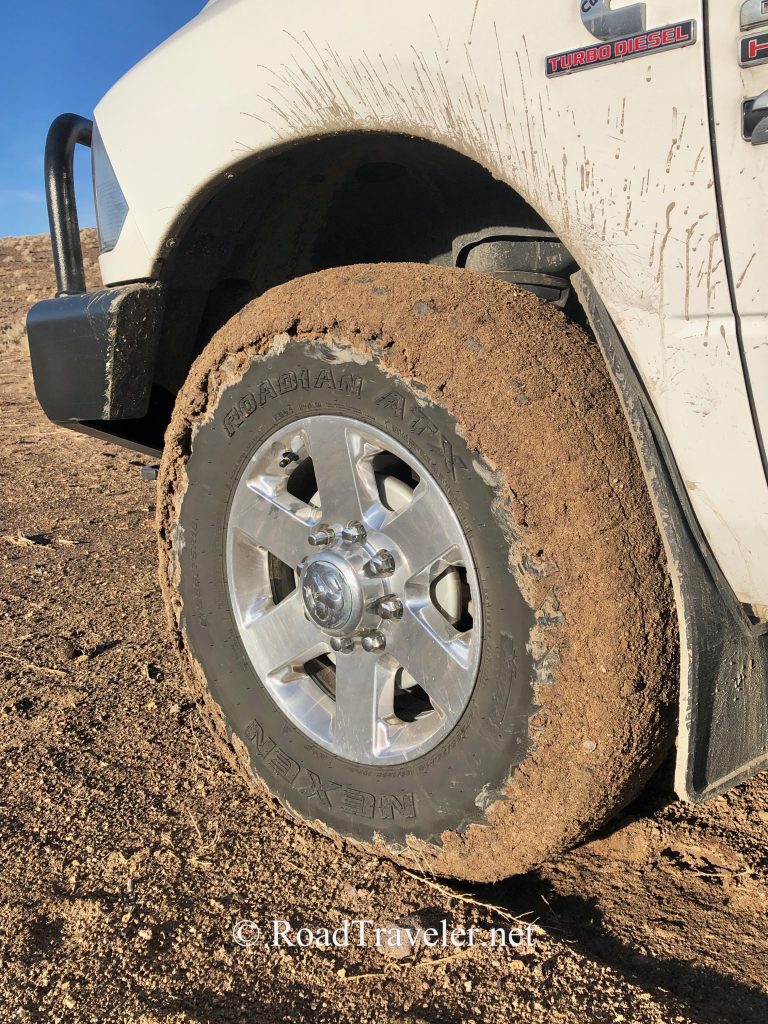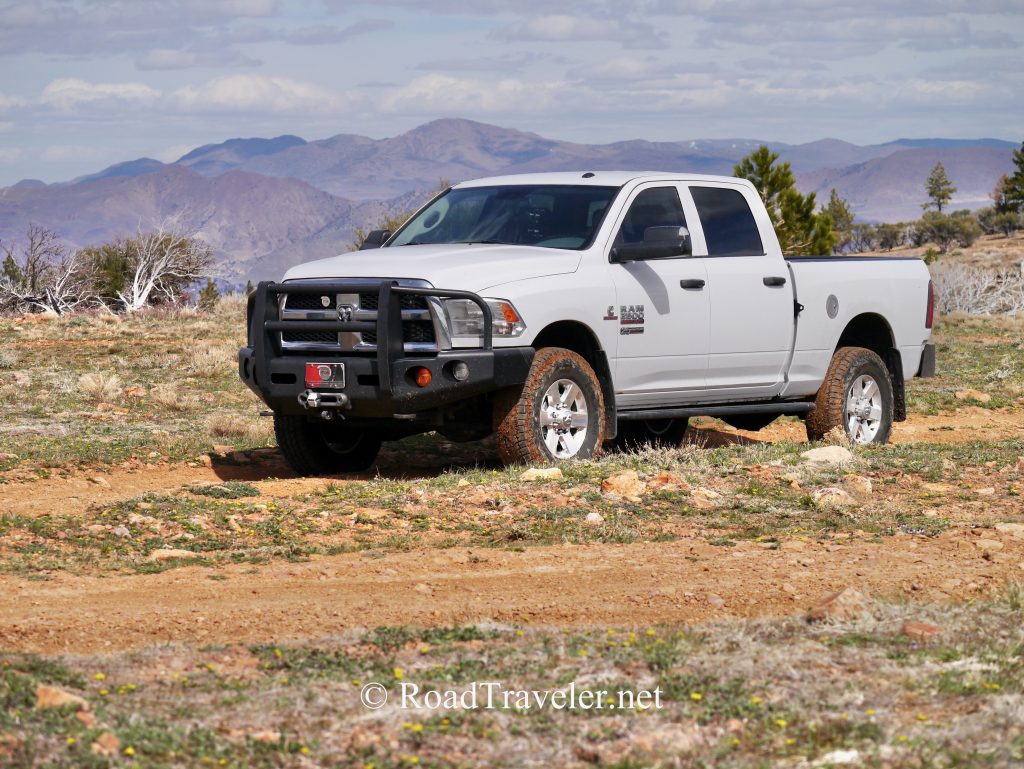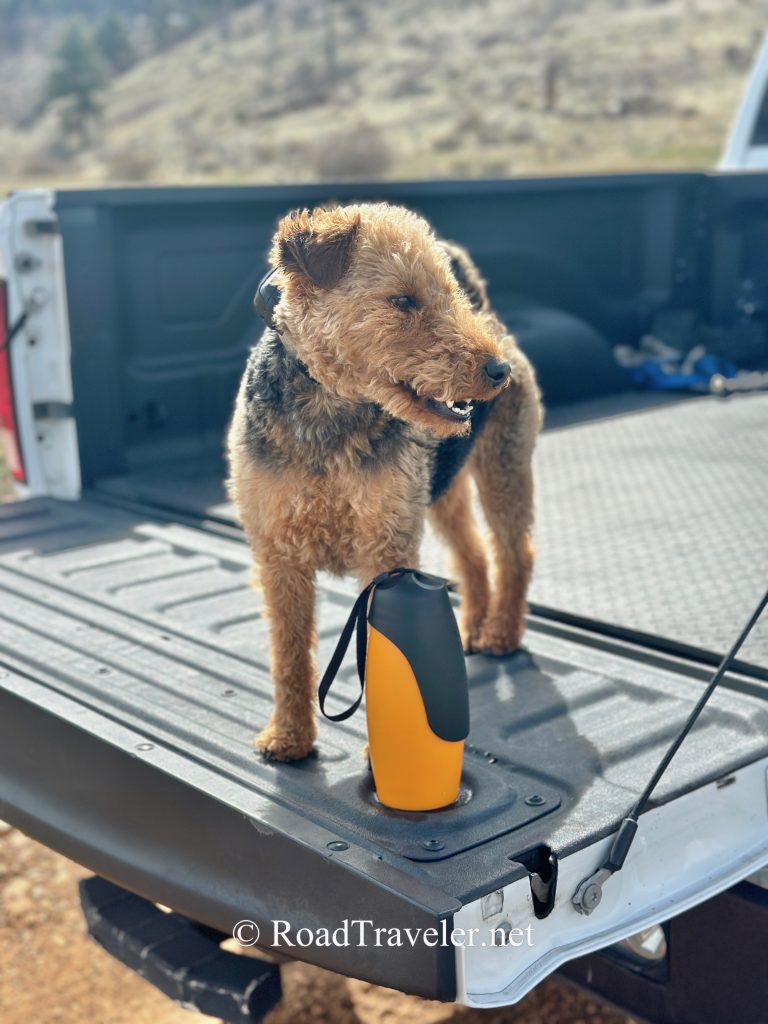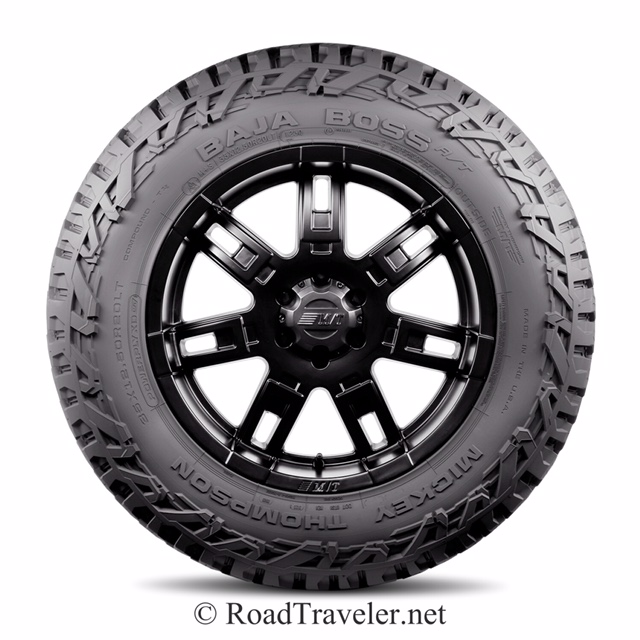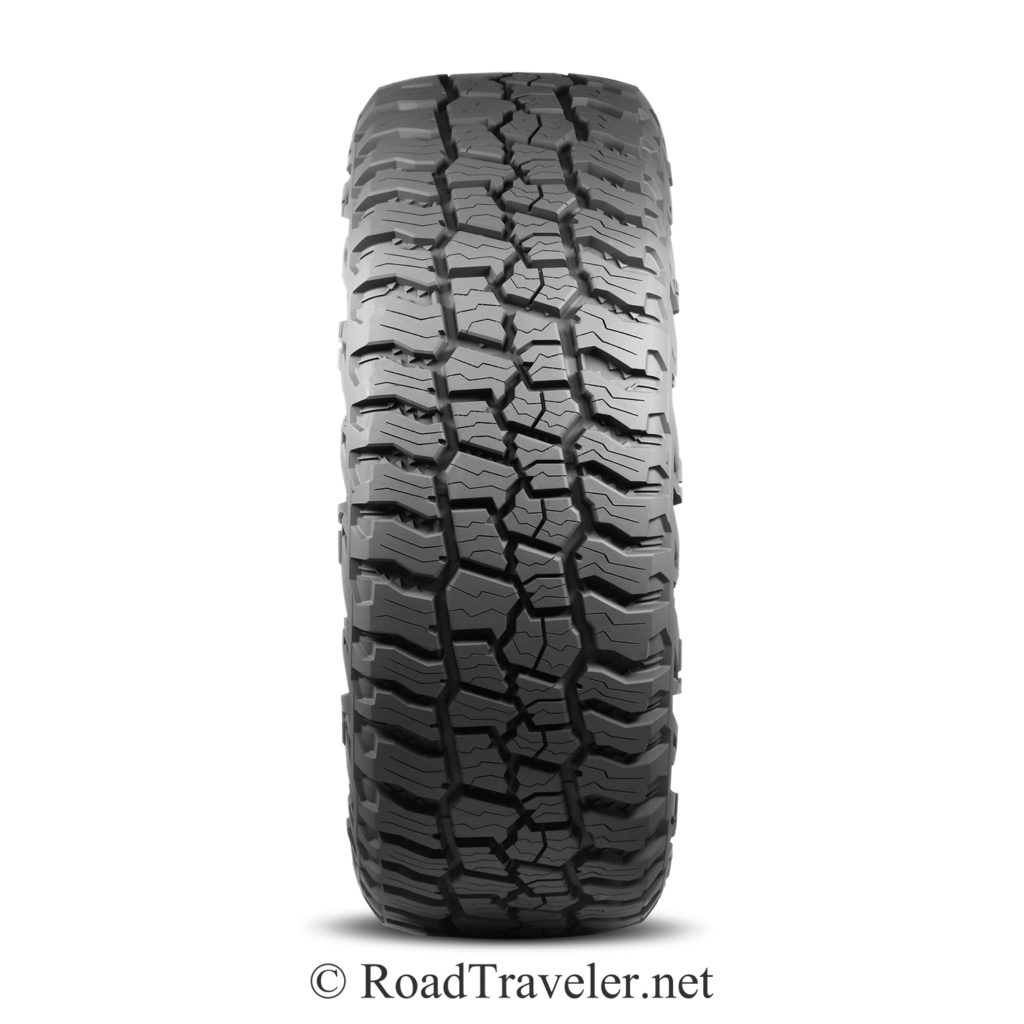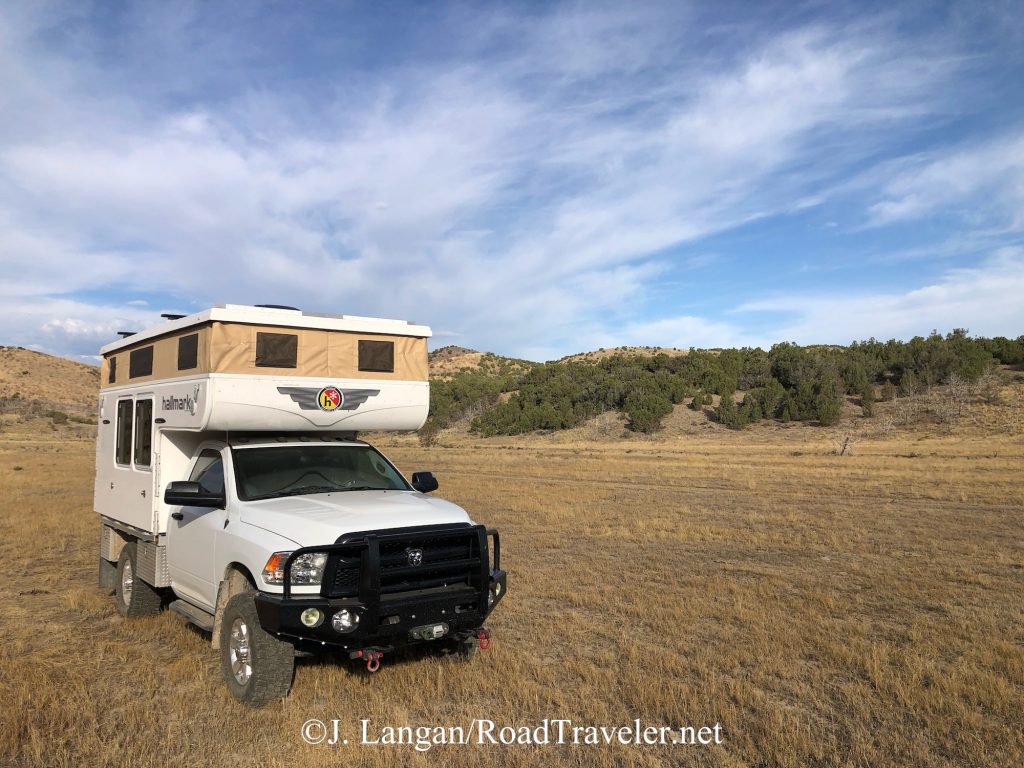
Mickey Thompson Baja Boss A/T LT295/70R18
During the November 2019 SEMA Show, I received insider information from a Mickey Thompson manager about a new Baja Boss A/T they had in-the-works; it was still more than one year from being announced. I’m a fan of the Benjamin Franklin quote “three may keep a secret if two of them are dead,” and I focus on being the one that is alive.
The Baja Boss All-Terrain was introduced to automotive journalists at the virtual 2020 SEMA Show, with a press embargo date of April 5, 2021. As soon as possible I requested a set for evaluation, choosing the LT295/70R18 size. One month later I had them.
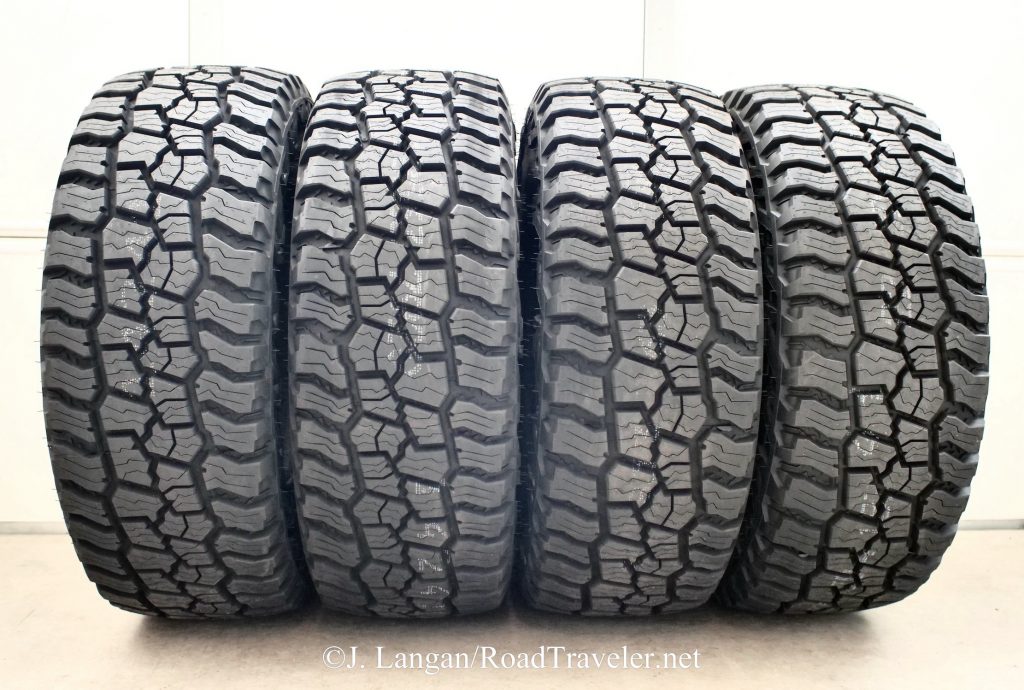
As you can see in my photographs this is a fairly high-void, four-rib tread pattern that Mickey Thompson calls a hybrid, AKA a commercial traction design or an aggressive all-terrain. Tires like these have been my preference for decades, offering more potential grip via siping, self-cleaning abilities, and deeper tread than more conservative all-terrains or all-seasons, while offering a quieter driving experience, and better longevity than mudders.
Continually reducing perceived noise while improving the other attributes of these hybrid designs has been an ongoing challenge for engineers. Historically there’s been no free lunch, because much better sloppy conditions traction requires bigger tread blocks and voids, increasing road noise. Was Mickey Thompson able to achieve the impossible? Read my opinion about this below under the subheading Quiet?
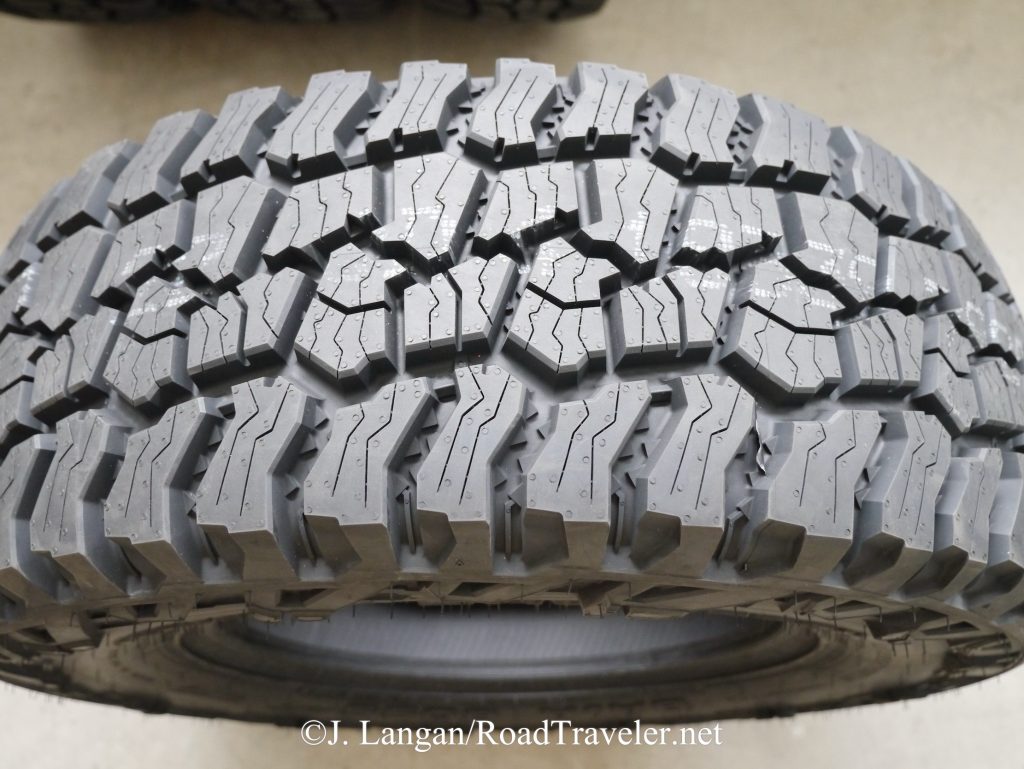
According To Mickey Thompson
Mickey Thompson says the Baja Boss A/T blends Extreme Sidebiters® for a bold look and serious grip with an all-new silica-reinforced compound providing long-wear, all-weather performance and cut/chip resistance.
Design highlights include:
- Large surface-area tread elements for a greater contact area
- Shoulder scallops for an additional biting edge
- Sound-deadening ribs for stability and a quiet ride
- Enhanced stone ejectors to reduce debris retention
- PowerPly XD™ with 50 percent heavier denier cord on the biased-angled third ply for protection, handling and stability
- Rim flange protector for added wheel protection
- 3 Peak Mountain Snowflake (3PMS) symbol certifies that all sizes 12.50 (315) and narrower are Severe Snow Service rated
- 50,000-mile treadwear warranty
- Increased-load LT-Metric sizing for heavy duty applications
- Lower-load floatation sizing for half-ton, lighter trucks and SUVs
- Several sizes approved for 12-inch and 14-inch wide wheels, including three 35X15.50 sizes
- A 35-inch tire approved for 17×6.5 “dually” wheels
To all of the above I say yup, appears to be true! The substantial siping, which helps achieve the severe winter rating and increase overall grip, measures a whopping 17/32” of the total 18.5/32” tread depth. Calling the shoulder tread Extreme Sidebiters® is not public relations department hyperbole, as they are 14/32” at their deepest!
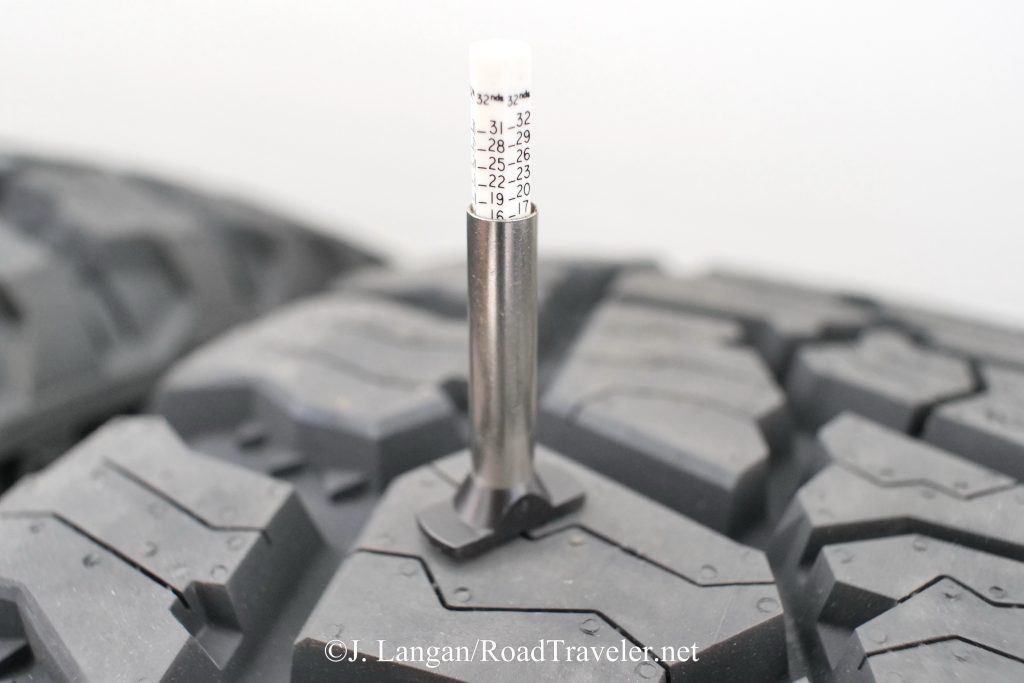
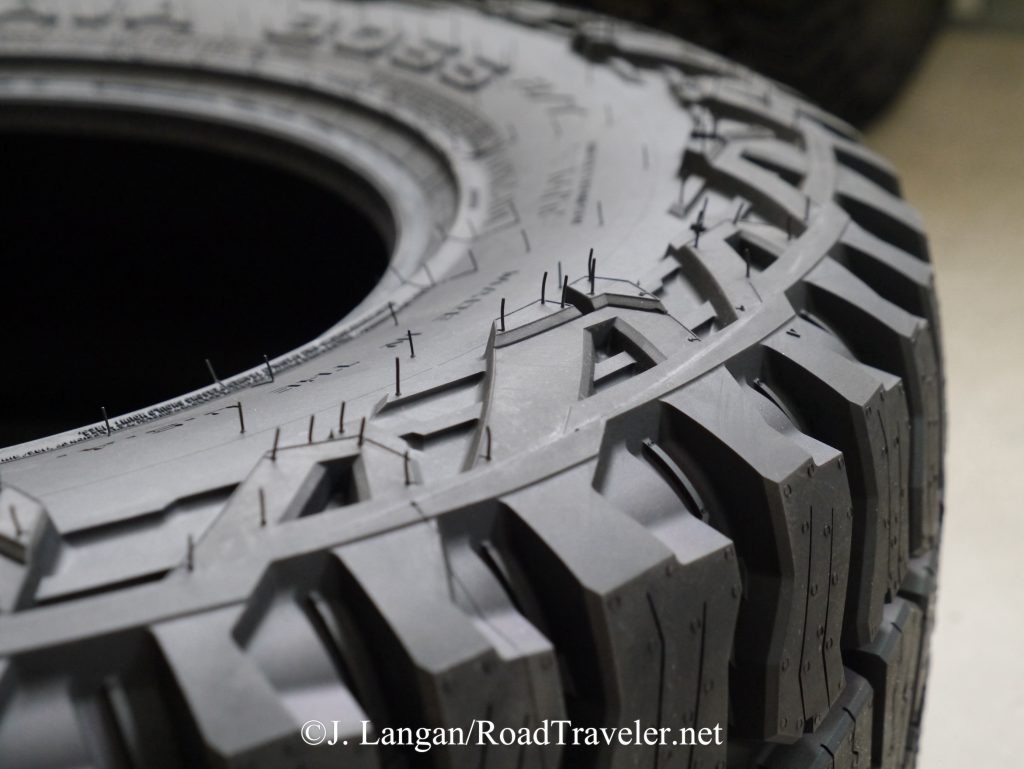
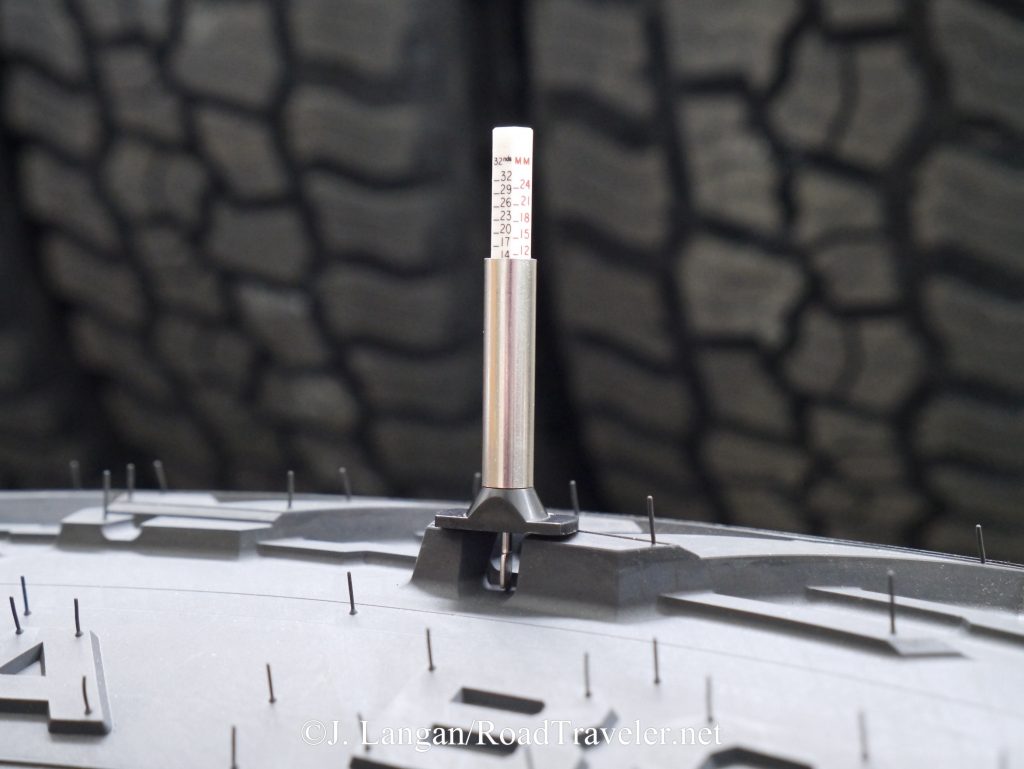
Sizes are offered for wheels from 15-24”. A standout worth noting for the DRW folks or old-schoolers like me that prefer taller, narrower rubber that fits and clears more easily, offering less rolling resistance, potentially better fuel economy, etc., is the LT255/85R17. Also know-as a 35×10.00R17, this load-index 121 size supports 3,195-pounds at 80-psi in SRW applications, and would be great under my everyday crew cab. However, the 129 load-index and 18” wheel of the LT295/70R18 was a better choice for my flatbed Hallmark Camper outfit because the shorter sidewalls are firmer and more stable for maximum loads.
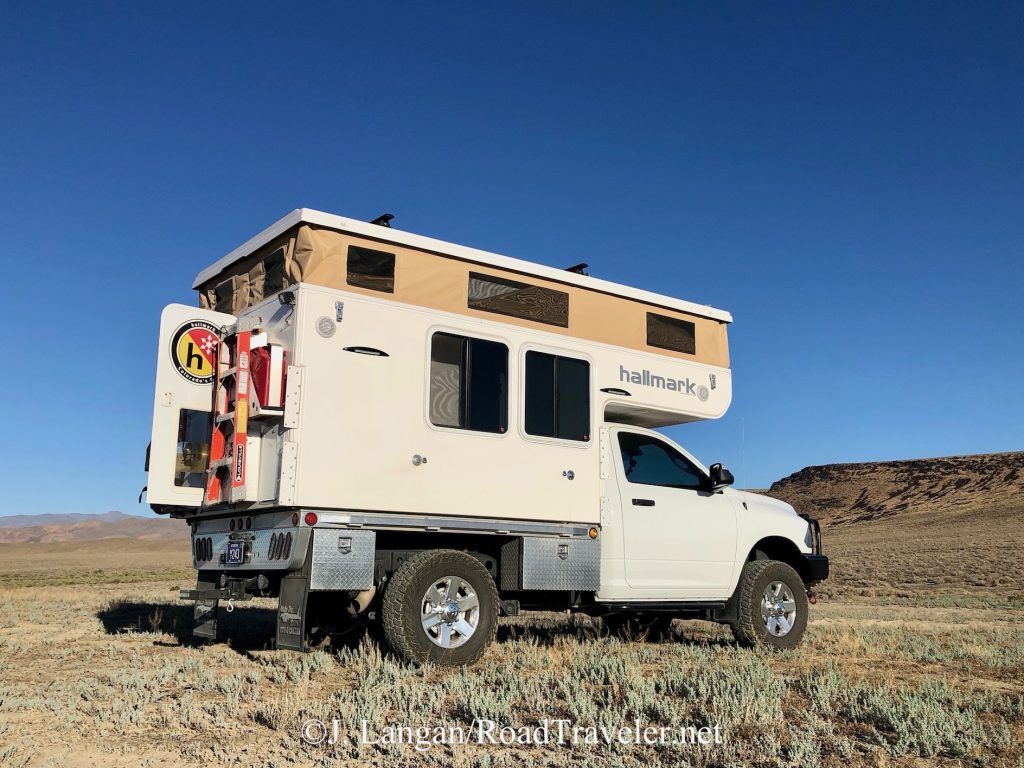
Mount & Balance
Unless a specific tire and wheel combination requires a different solution, my standard practice is to use a single plane, so-called static spin balance, as this method requires less weight and is generally sufficient. Wider tires and wheels, super aggressive treads, or just a carcass with more lateral imbalance may require dynamic balancing, which involves putting weight on both the inside and outside of the wheel.
Many do not realize that it is often the wheel that requires the majority of the weight to balance an assembly, as modern tires are generally fantastically true. An easy way for an enthusiast to see this is by noting where wheel weight has been placed for their current and previous sets of tires. Typically the weight is needed in the same general area, pointing to imperfections in the wheel more than the tires.
According to Mickey Thompson the LT295/70R18 size weighs 67 pounds each, and they were 104-pounds when mounted to an OEM forged aluminum wheel. Maybe you should sit down before you read how little weight was needed to static balance these beautiful meats.
1) 3.0 ounces, right-rear
2) 3.25 ounces, right-front
3) 2.5 ounces, left-rear
4) 3.25 ounces, left-front
Instead of putting the rims with the least weight upfront as is common at most shops, I typically put those with the most weight on the front axle. This helps confirm that they’re truly balanced, and avoids potential surprises after the first rotation. In this instance all the wheels needed just a few ounces. I rarely have tires rebalanced, as Centramatic balancers constantly perform that task. These Bosses have been run up to well above any speed limit on numerous occasions, and they have remained insanely smooth after thousands of miles and a few rotations, living on both of my Ram/Cummins trucks.
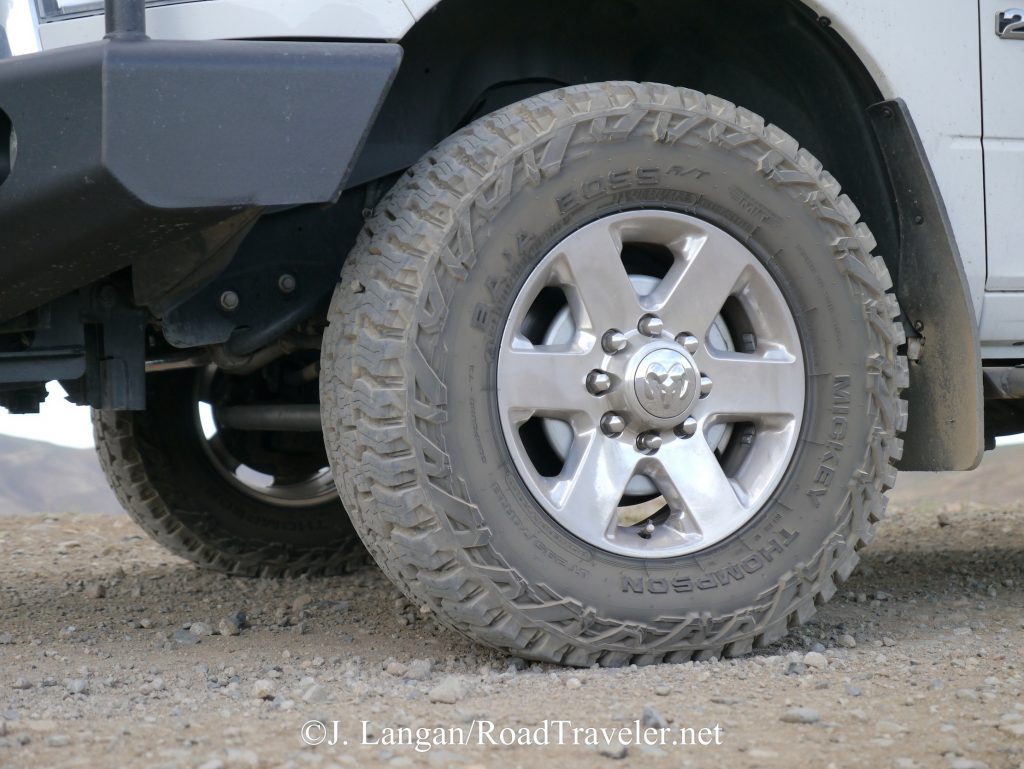
Quiet!
Manufactures have been increasingly successful making beefier treads quieter, yet I routinely find that even aggressive hybrid treads that start out impressively tame get louder with wear, sometimes much louder, even with optimal rotations. (All bets are off if proper maintenance and rotations are not strictly observed.) This has not been the case with the new Baja Boss A/T, the barely audible hum has yet to increase. To my ear they are still one of the quietest, if not the quietest, tire in this category that I’ve experienced. Impressive!

Tough Enough? Extreme Puncture Resistance?
Rugged designs help prevent punctures and stout carcass construction helps tires run cooler and support big loads, translating into better performance under heavy diesel-powered rigs that do more than run around empty. Commercial tradesman applications, farming and ranching, off-pavement adventures, and RV users can all benefit from the Boss A/T’s stout construction. Are these treads as rugged as they claim? After over 14,000 miles of hard use, my answer is a resounding yes!
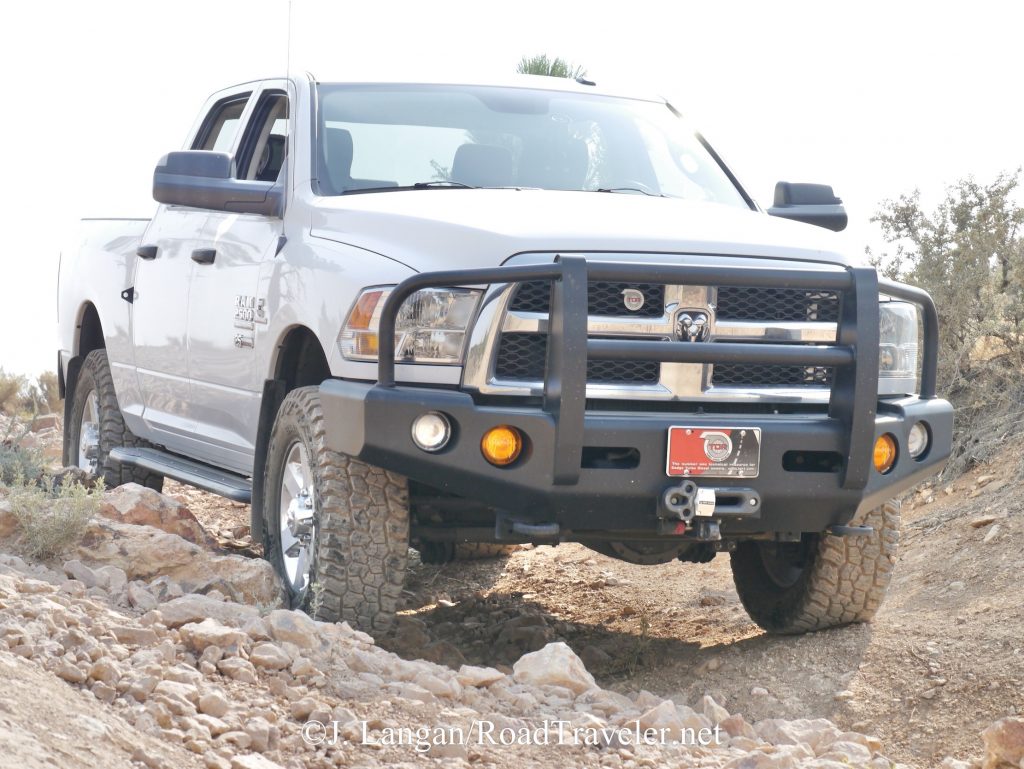
My tire evaluations typically include a photo shoot off-road at low pressures in a nearby National Forest, where I flex and abuse the tread and sidewall on some rocks. It helps gauge ruggedness and flexibility, and makes for some cool photographs. Few other than dedicated a 4WD enthusiast will ever do this, particularly in a big diesel pickup…enter the James-ness!
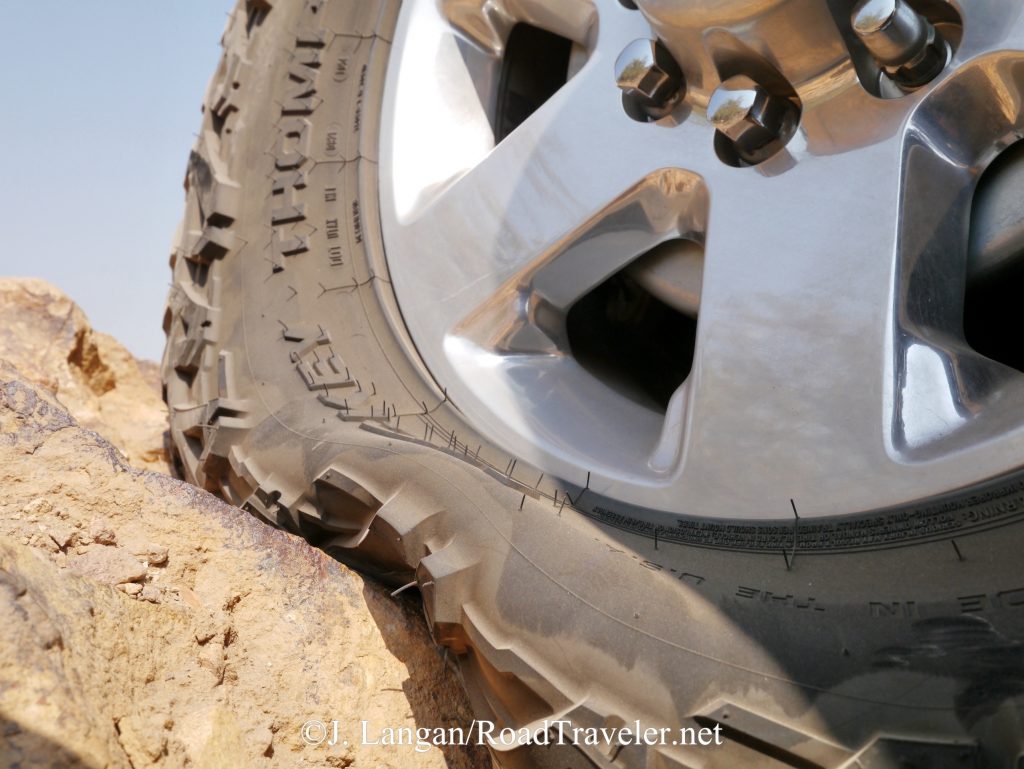
Even rugged tire designs can be punctured, as they are essentially rubber balloons. However, I was thoroughly impressed with the flexibility and ruggedness of the Baja Boss All-Terrain’s when I subjected the tread, shoulder, and sidewalls to folding and pinching rarely seen outside of competitive rock crawling.
After the photo shoot, they were filled with appropriate street pressure, and have continued to perform flawlessly at all speeds and under all conditions. Tire pressure has been dropped many times to improve off-payment traction, ride, and overall performance, and the tires repeatedly work like they should.
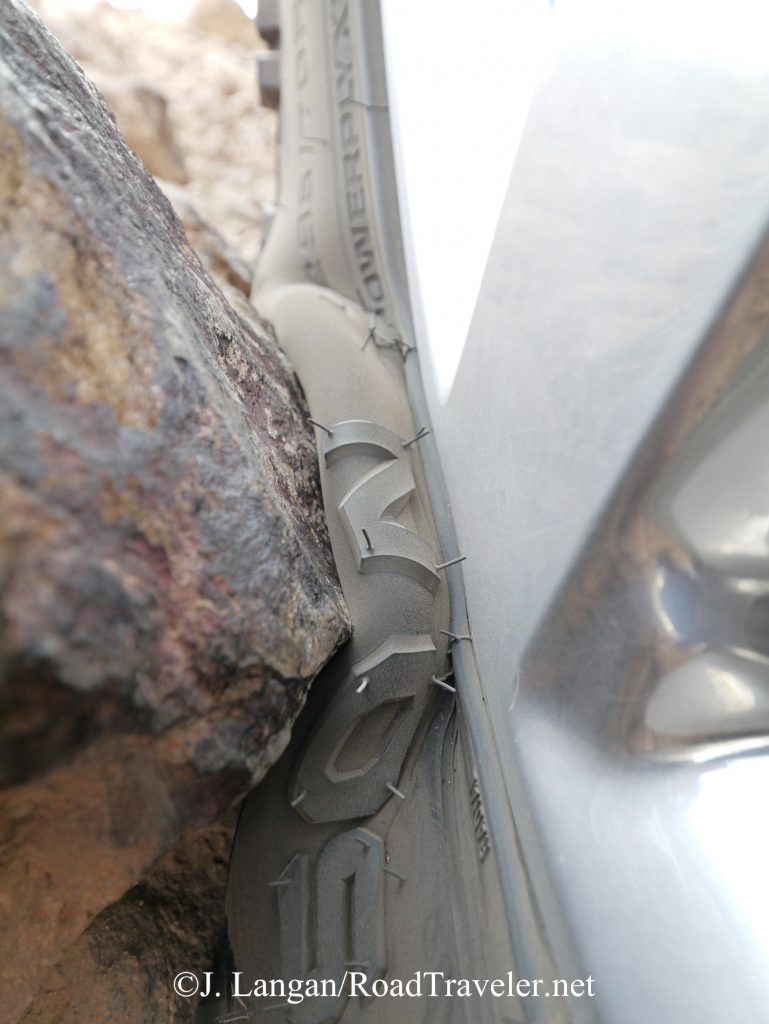

Application Considerations
My 2017 regular cab with Hallmark flatbed camper is a full time RV, so while it’s under a constant, full-load, it accumulates miles much more slowly than a daily driver. One would think that a heavily loaded RV-application Turbo Diesel (hauling and/or pulling) would result in rapid wear, yet that is not necessarily what happens. Chronicling treadlife on many sets of tires on my diesel pickups, and those of friends and acquaintances has provided valuable perspective.
Vehicles that see daily driving are typically subjected to repeated hard accelerations, which loads the drive tires, as well as hard stops and turning, which is harder on the fronts. These realities often contribute to reduced life compared to vehicles that see more steady, long-distance travel.
Occasional aggressive use of the skinny pedal is part of my driving style, although I am extremely soft on the brake pedal and travel slowly through most tight turns. I often obtain superior longevity and slower wear on my daily driver crew cab compared to my friends. Drivers matter.
Longevity
The Boss All-Terrains were initially mounted on my 2014 crew cab to log miles more quickly. As shared in previous columns, I am highly critical of the brief tire reviews in most magazines that say… the tires performed well, we really like them, blah blah; which is typically the result of nothing more than a few hundred miles of use, not thousands. Occasionally there’s an update later after more miles. Thousands of miles of saddle time and evaluation should be the baseline norm, not the exception.
The Boss A/Ts arrived at the perfect time, as I had started working away from home; the 2014 crew cab started seeing daily commuting miles, which included a run home during my lunch break for dog care. I’m often pressed for time, and there’s much firm use of the skinny pedal at the hands of the BD Throttle Sensitivity Booster (still LOVE it!). Due to these lifestyle changes the Boss A/Ts received harder use than any others treads in many years.
Under torque-monster diesel pickups I have repeatedly observed that approximately 1/32” of tread per 2,000 miles is good or average for an aftermarket set of rubber, and substantially more miles, 2,500 or so, is above average. For comparison, a few sets of OE Firestones I’ve measured have melted though 1/32” in a mere 1,500 miles, 25% less than my 2,000 mile baseline!
After the initial mounting and the first rotation on the 2014 crew cab, I had accumulated 6,500 miles on the Baja Boss A/Ts. Three measured 15.5/32”, and one was 15/32”, which was 2,080 mi. per 1/32” of tread depth. Considering the repeated, aggressive accelerations and fast driving this was above average; it would be just average with less spirited driving.
The Mickey Thompsons were pulled from the crew cab and slapped onto the 2017 Ram flatbed Hallmark camper rig, where they logged another 4,500 (s)miles before their third rotation. The rears were down to 13/32”, with the front wearing little and still showing 15/32. (This is part of why we must rotate.) As the tread becomes shallower the overall accuracy of measurements increases, and it’s not uncommon for the rate-of-wear to slow after these more accurate measurements. With another 3,500 miles under the Hallmark Camper, 14,500 miles total, all were showing 13/32”. The Baja Boss A/T treads had achieved 2,600 miles per 1/32”, which is well into the above average column for many diesel pickups.
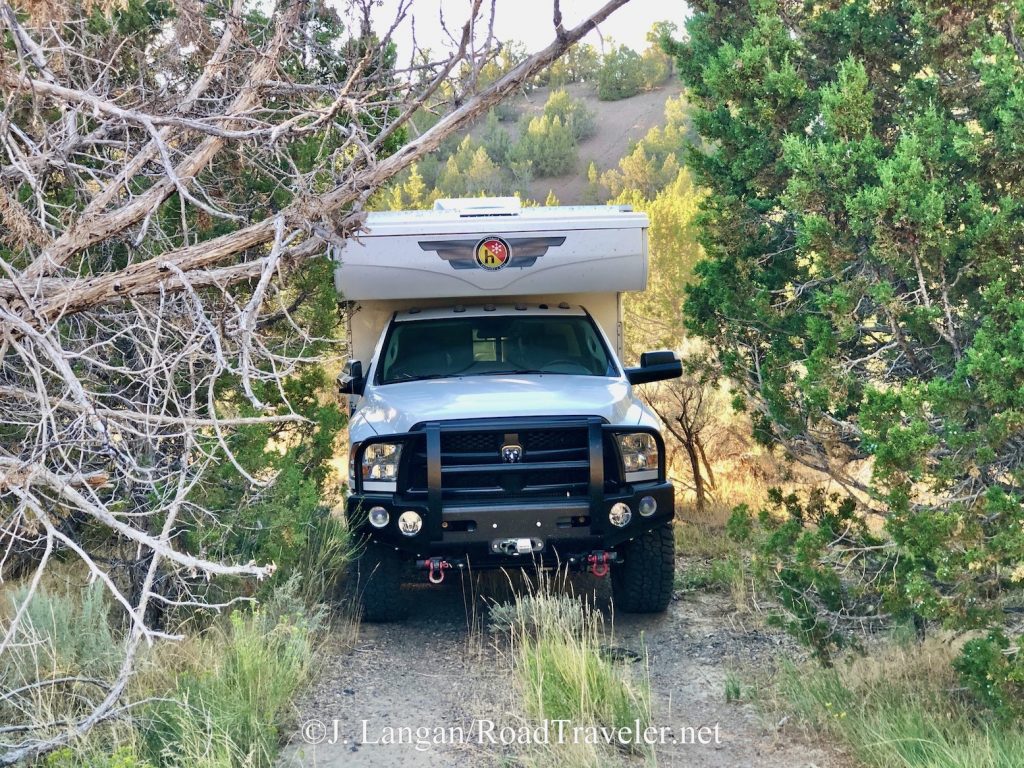
Traction Everywhere
Traction and handling has been impressive in all conditions and on all surfaces, which included much dirt, gravel, rock, some sand, rain, but unfortunately very little snow. It would’ve been nice to evaluate the severe winter rating more thoroughly. However, the western states multiyear drought has severely reduced precipitation in Northern Nevada and Northern California.
It’s difficult to chronicle the exact number of off-pavement miles these Bosses have seen, but a conservative estimated is 1,500 (10% is huge for non-commercial applications). Opinions regarding traction are mostly subjective, variable, and relative to the platform and driver. Nevertheless, for those wanting a hybrid tire I don’t envision people wanting more grip than the Baja Boss A/T can provide. Should the opportunity present itself I’d gladly run another set of the Baja Boss, as they’ve earned a spot on my short list of favorites.
Tell ‘em you saw it on RoadTraveler.net!
Copyright J. Langan/RoadTraveler. All Rights Reserved
James Langan
Resource:
Mickey Thompson Tires: mickeythompsontires.com
draft
